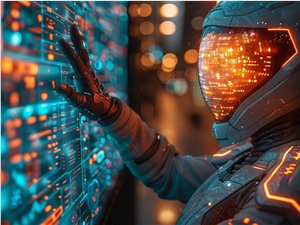Tesla has once again pushed the boundaries of humanoid robotics. The latest release of the Optimus robot showcases a series of impressive new features, from autonomous navigation to human interaction, highlighting the rapid advancements in artificial intelligence and robotics technology.
One of the most striking features of this robot is its autonomous navigation capability. Optimus can move freely in complex environments, exploring unknown areas without human intervention. Even more astonishing is that multiple Optimus robots can work collaboratively, sharing environmental information to optimize navigation efficiency and enhance task completion.
In terms of energy management, Optimus demonstrates remarkable autonomy. It can automatically locate the nearest charging station and precisely align with the charging interface using a rear-facing camera to achieve self-charging. This feature significantly enhances the robot's operational duration and efficiency.
Optimus's load capacity has also been significantly improved. It can now carry battery trays weighing up to 11 kilograms without overheating and affecting performance. This breakthrough opens up new possibilities for Optimus in industrial and logistics applications.
Tesla's engineers have also equipped Optimus with the ability to handle complex terrains. This robot can now walk on flat surfaces as well as navigate stairs with ease, greatly expanding its range of activities and applicable scenarios.
In human-robot interaction, Optimus has made significant strides. Through advanced AI technology, it can understand and execute human commands, such as fetching and delivering different items. This capability makes Optimus highly promising in areas like home services and assisted living.
Technically, all new features of Optimus are controlled by a unified neural network. This integrated design not only ensures coordinated multi-function operation but also significantly improves overall operational efficiency. Even more impressive is that this complex neural network can run in real-time on Optimus's built-in computer, allowing the robot to quickly respond to task changes and environmental challenges.
Safety is another focus in Optimus's design. It can recognize and react to unsafe behaviors, greatly enhancing the safety and reliability of human-robot collaboration. Additionally, Optimus demonstrates precise object recognition and manipulation capabilities, able to identify, pick up, and deliver specific items according to commands, showing its adaptability in diverse tasks.
These advancements in Tesla's Optimus robot not only showcase Tesla's strong capabilities in AI and robotics but also pave the way for the widespread application of humanoid robots in the future. As technology continues to evolve, we can expect Optimus to play an increasingly important role in various fields such as industrial production, home services, and healthcare, bringing unprecedented convenience and efficiency to human society.









